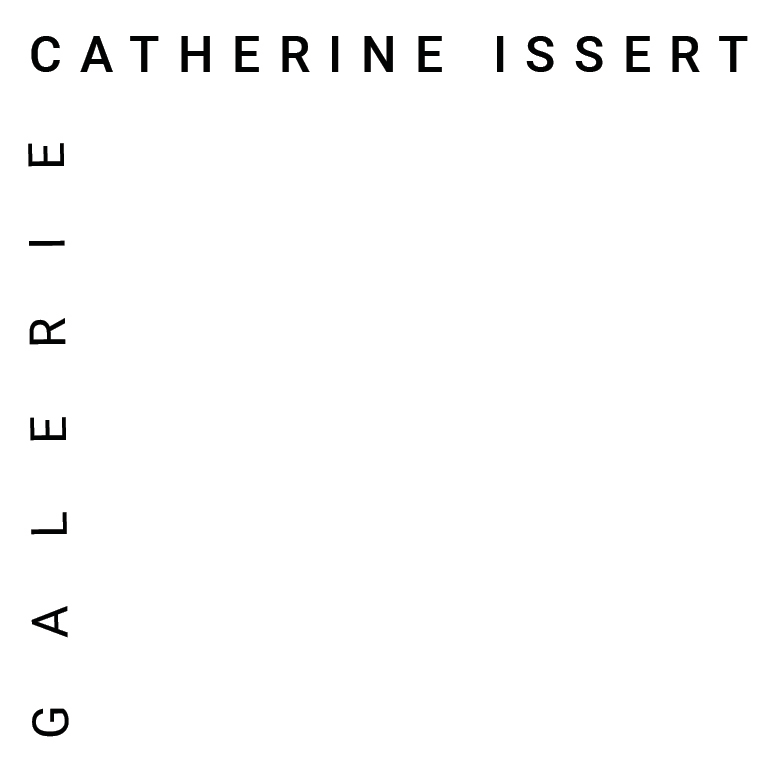Born in Pittsburgh in 1954, Daphne Corregan lives and works in the south of France. She is an important figure in the art of ceramics, both for her technical knowledge and her blending of cultures.
Daphne Corregan draws her inspiration from a wide range of references, where visual, primitive, popular, decorative, and applied arts intersect. Having long practiced raku firing in the tradition of American ceramists Paul Soldner and Jim Romberg, she has, since her travels in Africa and China, become interested in ancestral techniques such as coil building, which allows her to achieve sensual and sculpted surfaces.
Although she relies on the technical lexicon of ceramics, such as coil building, firing, smoking, or slip application, her work goes far beyond the prerequisites of this medium. Her practice originates in drawing: her sculptures, often produced in series, transcribe the spontaneity and dynamism of her preparatory sketches.
Daphne Corregan also transcends the limited scope of ceramics in its artisanal, utilitarian, and decorative sense: she explores the inherent challenges of modeling (content-container, interior-exterior, fragility, tension, balance) through a processual and experimental approach, which leads the object to oscillate between function and figure, creating ambiguity between the domestic and the symbolic.
Daphne Corregan's artistic approach can be linked to the etymology of the Latin term "figura," which refers both to the shaped object and the metaphor; it symbolizes the "problematic point of contact between the sensible and the intelligible, the visible and the invisible, the corporeal and the spiritual."
Her works, with their anthropomorphic forms and delicate ornaments, express, through their familiar and intimate presence, this "alliance of spirituality and a sense of reality" specific to the figure. Through them, Daphne Corregan metaphorizes an embodied, sensitive, and universal aesthetic memory.
-------------------------
Née à Pittsburgh en 1954, Daphne Corregan vit et travaille dans le sud de la France. Elle est une figure importantede l’art de la céramique tant pour sa connaissance technique que par sa mixité des cultures.
Daphne Corregan puise son inspiration dans un large champ référentiel où s’entrecroisent les arts plastiques, premiers, populaires, décoratifs et appliqués. Ayant longtemps pratiqué la cuisson en raku dans la lignée des céramistes américains Paul Soldner ou Jim Romberg, elle s’intéresse depuis ses voyages en Afrique ou en Chine à des techniques ancestrales comme celle du colombin, qui lui permet d’obtenir des surfaces sensuelles et modelées.
Si elle s’appuie sur le lexique technique de la céramique comme le façonnage au colombin, la cuisson, l’enfumage ou l’engobage, son œuvre dépasse largement les prérequis de ce médium. Sa pratique prend naissance dans le dessin : déclinées sous forme de séries, ses sculptures retranscrivent la spontanéité et le dynamisme de ses croquis préparatoires.
Daphne Corregan outrepasse également le champ circonscrit de la céramique dans son acceptation artisanale, utilitaire et décorative : elle explore les problématiques inhérentes au modelage (contenu - contenant, intérieur - extérieur, fragilité, tension, équilibre) par le prisme de recherches processuelles et expérimentales, qui mènentl’objet vers une oscillation entre fonction et figure, une ambiguïté entre domestique et symbolique.
La démarche artistique de Daphne Corregan nous renverrait ici à l’étymologie du terme latin figura, qui désigne à la fois l’objet façonné et la métaphore1 ; qui symbolise le "point de contact problématique du sensible et de l’intelligible, du visible et de l’invisible, du corporel et du spirituel.2 "
Car ses œuvres aux formes anthropomorphiques et aux ornements délicats expriment, par leur présence familière et intime, cette "alliance de spiritualité et de sens du réel.3" propre à la figure. Par leur biais, Daphne Corregan métaphorise une mémoire esthétique incarnée, sensible et universelle.
1 « Figura, de la même famille que fingere [façonner], figulus [potier], fictor [sculpteur, modeleur] et effigies [image,portrait, statue], signifie à l’origine "objet façonné". » Eric Auerbach, Figura, Editions Macula, 2003
2 Agnès Guiderdoni, « La figure réinventée au début de la période moderne », revue Persée, 20133 Eric Auerbach, op. cit.
3 Eric Auerbach, op. cit.

